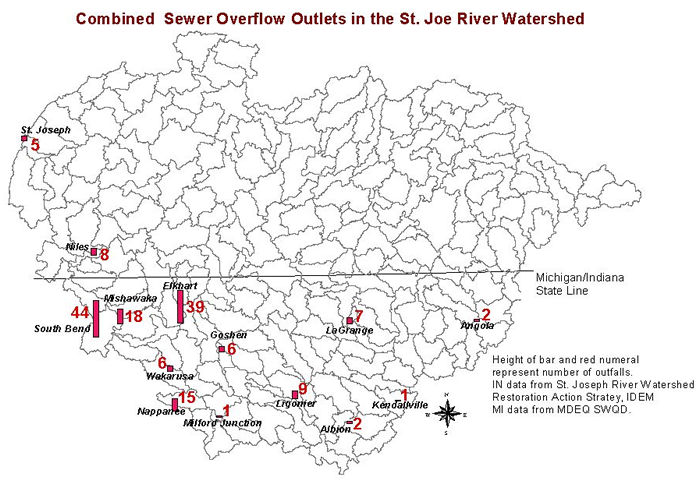 you
are here » st. joe river homepage
» wmp »
tasks
»
task 3 » cso
you
are here » st. joe river homepage
» wmp »
tasks
»
task 3 » cso you
are here » st. joe river homepage
» wmp »
tasks
»
task 3 » cso
you
are here » st. joe river homepage
» wmp »
tasks
»
task 3 » cso

|
In most cities,
storm sewers convey runoff from impervious surfaces (parking lots, roads,
roof tops) to area rivers and lakes. Sanitary sewers convey waste water
from sinks and other drains to a water reclamation plant. Conversely,
in some cities, storm sewers and sanitary sewers are combined. They both
convey water to the water reclamation plant. When a large rain event occurs,
the volume of water entering the sewers can exceed the system's capacity.
Therefore, these systems have permitted overflow outlets, which allow
excess water to be discharged to area water bodies. This allows both stormwater
and sanitary waste water to be released, which can contaminate surface
water bodies (and sometimes beaches) with enteric (from the intestines)
microorganisms. The above map illustrates the number of combined sewer
overflow outlets, as permitted through the NPDES Program, in the St. Joe
River Watershed. The height of each bar and the red numeral represent
the number of outlets in each labeled city. LINKS |